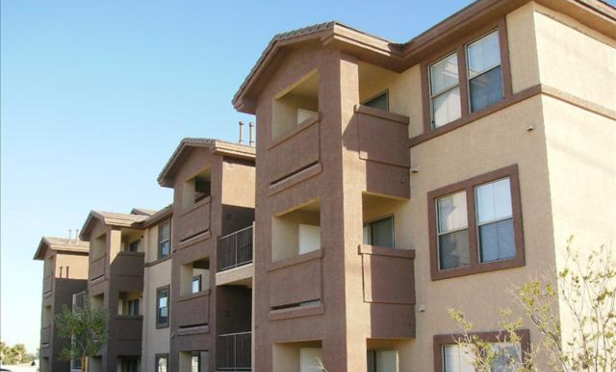 Oak Residential's latest acquisition
Oak Residential's latest acquisition
Chicago-based investment firm Oak Residential recently acquired its third property in the Las Vegas market in the last two years. While it identified the city as a target market, it is proceeding with caution. That is because Las Vegas opportunities can vary block-by-block, making due diligence crucial.
"Las Vegas is a highly segmented market and locations can vary block by block," Eytan Peer, VP of acquisitions at Oak Residential, tells GlobeSt.com. "This market presents its own unique and specific challenges, often making it more important to know where to buy rather than what to buy. We've successfully accumulated several assets in and around Henderson with the intent of achieving a critical mass, and greater economies of scale."
For this reason, the firm has remained active in the market, although not aggressive in terms of acquisition activity. It is currently actively perusing opportunities in the Northwest and Southwest submarkets, where Peer says there is localized growth. "Once we identify a location we're intent to focus on, we target assets that are 150-500 units in size and generally built from 1980-2010," he adds. "Assets that present themselves with physical value-add opportunities, lacking in interior finishes and exterior amenities relative to its competitive set, are ideal but rare at this point in the cycle. As a result, we take a forensic approach to identifying inefficiencies in operations, whether it be through the asset's income or expenses, and seek to add value establishing an institutional business model. Conservative strategies can sometimes result in extended periods of time between acquisitions."
While Oak is caution and conservative, the Las Vegas fundamentals present good investment opportunities. "Mitigated supply relative to demand, unprecedented employment growth, further diversification in the economy, and migratory patterns, which suggest a flight to affordability, are all essential components in our investment thesis," he says. "Some of these factors have contributed to the recent year-over-year rent growth of 8.9%, which has caught the attention of many groups nationally and fueled a tremendous wave of new entrants and investment capital to flood the market."
Oak has a proprietary predictive analytics model, and has identified Las Vegas as a market with an extended rental runway. "As of Q2 2019 the median annual income in Las Vegas is $57,189 and median effective rents are $1,086, which contemplates an affordability ratio of 23%," says Peer. "Conversely, residents living in coastal markets are spending more than 40% of their income on rent, generating a wide delta between the rental runway Las Vegas and its western alternatives. Employment growth patterns are highly correlated with population flows, and job growth remains to be an intrinsic catalyst for multifamily demand. Las Vegas ranked second nationally in job growth as of May 2019 with 2.9% overall increase in employment figures. The long-term outlook for population growth suggests that Las Vegas will add more than 60,000 residents annually through 2026."
© Touchpoint Markets, All Rights Reserved. Request academic re-use from www.copyright.com. All other uses, submit a request to [email protected]. For more inforrmation visit Asset & Logo Licensing.






